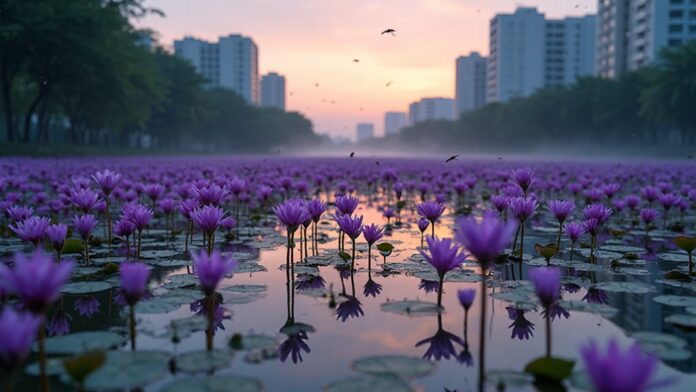Katraj Lake is an important water source for people living in Pune. But recently, a lot of water hyacinth, a type of plant, has grown in the lake. This plant now covers 73% of the lake's 165 acres. This is a big problem because it can harm the lake's environment and how people use it. The reason for this situation is that not enough hyacinth has been removed, and the management of the lake hasn't been consistent over the last five years. Since 2019, the efforts to remove the hyacinth using machines have dropped by 62%, while the growth of the plant has increased by 2.8 times.
The thick layer of hyacinth is also causing problems for people because it allows mosquitoes to breed. Surveys show that the number of mosquito larvae has increased by 340% since 2020. The Municipal Health Department reports that mosquito populations have risen, especially in homes near the lake. In these areas, cases of diseases spread by mosquitoes have gone up by 156% in the last eight months.
The quality of the water in Katraj Lake is getting worse. The amount of oxygen in the water has fallen to 2.3 mg/L, which is below what fish need to survive. The breakdown of the hyacinth is making the water dirty, and the visibility in the water has dropped to only 0.8 meters. Because of this, the number of native fish has decreased by 45% since 2021.
The lake is also losing its value for recreation. Fewer people are visiting, with a drop of 78% in the last year. Efforts to control the hyacinth using weevils have only worked 12% of the time. Chemical treatments are limited because they can harm the environment and drinking water.
Experts say that action is needed right away. If nothing is done, the hyacinth could cover 92% of the lake in just eight months. The municipal corporation has set aside ₹4.2 crore for a plan that includes mechanical removal and better monitoring. Their goal is to reduce the hyacinth coverage to 15% in six months by removing 4.5 metric tons of the plant each day and improving how the water is managed.






